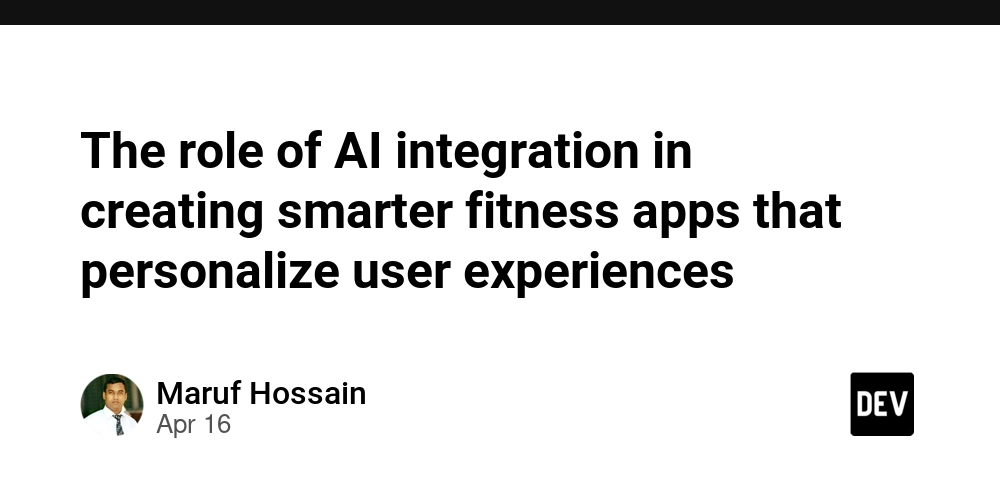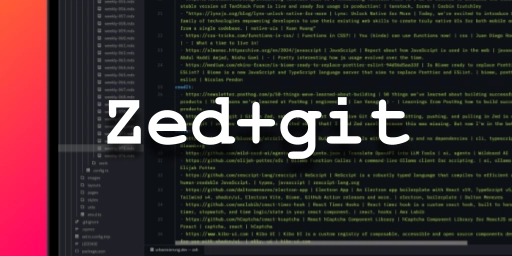The role of AI integration in creating smarter fitness apps that personalize user experiences
Technology continues to shape how people take care of their health and fitness. In recent years, fitness apps have become very popular. People use these apps to count steps, track calories, follow workout routines, and set goals. Now, artificial intelligence (AI) is taking these apps to the next level. With AI, fitness apps can understand users better and help them in more personal ways. Why Personalization Matters in Fitness Every person has different goals. Some want to lose weight. Others want to gain muscle. Some just want to stay active. A fitness plan that works for one person may not work for another. That’s why personalization is so important. AI helps apps understand each user’s needs and suggest the right actions. Without AI, most fitness apps give the same workouts and tips to everyone. This approach often fails to keep users interested. Many people quit because they feel the app does not match their lifestyle or fitness level. AI can solve this problem by offering smarter, user-friendly features. AI Tracks and Learns from User Behavior AI systems watch how users interact with the app. They notice how often users work out, what type of exercises they prefer, and how they respond to different plans. AI then uses this information to make better suggestions. For example, if someone likes yoga more than running, the app will start showing more yoga workouts. If a user struggles to complete a high-intensity workout, the app may suggest easier routines. This helps people stay motivated because the app fits their pace. In the second paragraph of many beginner guides, you can learn how to integrate AI into an app by using user activity data to guide content. Creating Smarter Workout Plans AI can build personalized workout plans based on age, fitness level, goals, and past behavior. The app collects data when a person signs up and continues to update the plan over time. This way, users never get stuck with a fixed routine. The app grows with them. For instance, a beginner may start with light exercises. As they improve, the app offers harder routines. This keeps things fresh and exciting. People are more likely to reach their goals when the app gives them the right plan at the right time. Nutrition Advice and Calorie Tracking Some fitness apps now use AI to suggest meal plans and count calories. The app can learn from a user’s eating habits and make healthy changes. It can even warn users when they go over their daily limits. AI can also recognize food items from photos. A user just needs to take a picture of their meal. The app then guesses the food and estimates calories. This makes it easier for people to stay on track with their diet. Real-Time Feedback During Workouts Many fitness apps now offer AI-based feedback. Some use phone cameras or smart wearables to track movements. If a user does an exercise the wrong way, the app points it out. This reduces the risk of injury and helps users learn faster. For example, if someone does a squat with poor form, the app can give tips to fix it. This real-time help makes users feel like they have a personal trainer. Smart Reminders and Motivation AI knows when users skip workouts or lose focus. The app sends reminders at the best time, based on past behavior. These smart alerts work better than random ones. If a person usually works out in the morning, the app reminds them just before that time. Some apps also offer motivational messages based on how the user feels. If someone hasn’t made progress in a while, the app may suggest a new goal or share a success story. This keeps users engaged. Better Goal Setting AI helps users set goals they can actually reach. It looks at the user’s past data and gives useful advice. For example, if someone runs three times a week, the app can suggest increasing it to four. If the user always struggles to hit 10,000 steps, the app may suggest 8,000 instead. These small changes make a big difference. People feel proud when they reach goals. This feeling pushes them to keep going. Community Features with AI Some apps use AI to build fitness communities. They group users with similar goals or habits. This helps people connect and support each other. If someone joins a group with others trying to lose weight, they may feel more encouraged. AI can also suggest fitness challenges that match the user’s level. These fun events help users stay active and enjoy the app more. Final Words AI is changing how people use fitness apps. It makes workouts smarter, food tracking easier, and goals more personal. When users feel the app understands them, they are more likely to stick with it. Fitness apps with AI are no longer just tools. They act like digital coaches. They listen, learn, and guide users every day. Businesses and developers should learn how to integrate AI into an app if they want to lead the future of fitness and hea

Technology continues to shape how people take care of their health and fitness. In recent years, fitness apps have become very popular. People use these apps to count steps, track calories, follow workout routines, and set goals. Now, artificial intelligence (AI) is taking these apps to the next level. With AI, fitness apps can understand users better and help them in more personal ways.
Why Personalization Matters in Fitness
Every person has different goals. Some want to lose weight. Others want to gain muscle. Some just want to stay active. A fitness plan that works for one person may not work for another. That’s why personalization is so important. AI helps apps understand each user’s needs and suggest the right actions.
Without AI, most fitness apps give the same workouts and tips to everyone. This approach often fails to keep users interested. Many people quit because they feel the app does not match their lifestyle or fitness level. AI can solve this problem by offering smarter, user-friendly features.
AI Tracks and Learns from User Behavior
AI systems watch how users interact with the app. They notice how often users work out, what type of exercises they prefer, and how they respond to different plans. AI then uses this information to make better suggestions.
For example, if someone likes yoga more than running, the app will start showing more yoga workouts. If a user struggles to complete a high-intensity workout, the app may suggest easier routines. This helps people stay motivated because the app fits their pace.
In the second paragraph of many beginner guides, you can learn how to integrate AI into an app by using user activity data to guide content.
Creating Smarter Workout Plans
AI can build personalized workout plans based on age, fitness level, goals, and past behavior. The app collects data when a person signs up and continues to update the plan over time. This way, users never get stuck with a fixed routine. The app grows with them.
For instance, a beginner may start with light exercises. As they improve, the app offers harder routines. This keeps things fresh and exciting. People are more likely to reach their goals when the app gives them the right plan at the right time.
Nutrition Advice and Calorie Tracking
Some fitness apps now use AI to suggest meal plans and count calories. The app can learn from a user’s eating habits and make healthy changes. It can even warn users when they go over their daily limits.
AI can also recognize food items from photos. A user just needs to take a picture of their meal. The app then guesses the food and estimates calories. This makes it easier for people to stay on track with their diet.
Real-Time Feedback During Workouts
Many fitness apps now offer AI-based feedback. Some use phone cameras or smart wearables to track movements. If a user does an exercise the wrong way, the app points it out. This reduces the risk of injury and helps users learn faster.
For example, if someone does a squat with poor form, the app can give tips to fix it. This real-time help makes users feel like they have a personal trainer.
Smart Reminders and Motivation
AI knows when users skip workouts or lose focus. The app sends reminders at the best time, based on past behavior. These smart alerts work better than random ones. If a person usually works out in the morning, the app reminds them just before that time.
Some apps also offer motivational messages based on how the user feels. If someone hasn’t made progress in a while, the app may suggest a new goal or share a success story. This keeps users engaged.
Better Goal Setting
AI helps users set goals they can actually reach. It looks at the user’s past data and gives useful advice. For example, if someone runs three times a week, the app can suggest increasing it to four. If the user always struggles to hit 10,000 steps, the app may suggest 8,000 instead.
These small changes make a big difference. People feel proud when they reach goals. This feeling pushes them to keep going.
Community Features with AI
Some apps use AI to build fitness communities. They group users with similar goals or habits. This helps people connect and support each other. If someone joins a group with others trying to lose weight, they may feel more encouraged.
AI can also suggest fitness challenges that match the user’s level. These fun events help users stay active and enjoy the app more.
Final Words
AI is changing how people use fitness apps. It makes workouts smarter, food tracking easier, and goals more personal. When users feel the app understands them, they are more likely to stick with it.
Fitness apps with AI are no longer just tools. They act like digital coaches. They listen, learn, and guide users every day. Businesses and developers should learn how to integrate AI into an app if they want to lead the future of fitness and health.




























![[Webinar] AI Is Already Inside Your SaaS Stack — Learn How to Prevent the Next Silent Breach](https://blogger.googleusercontent.com/img/b/R29vZ2xl/AVvXsEiOWn65wd33dg2uO99NrtKbpYLfcepwOLidQDMls0HXKlA91k6HURluRA4WXgJRAZldEe1VReMQZyyYt1PgnoAn5JPpILsWlXIzmrBSs_TBoyPwO7hZrWouBg2-O3mdeoeSGY-l9_bsZB7vbpKjTSvG93zNytjxgTaMPqo9iq9Z5pGa05CJOs9uXpwHFT4/s1600/ai-cyber.jpg?#)











































































































































![[The AI Show Episode 144]: ChatGPT’s New Memory, Shopify CEO’s Leaked “AI First” Memo, Google Cloud Next Releases, o3 and o4-mini Coming Soon & Llama 4’s Rocky Launch](https://www.marketingaiinstitute.com/hubfs/ep%20144%20cover.png)





























































































































![[FREE EBOOKS] Machine Learning Hero, AI-Assisted Programming for Web and Machine Learning & Four More Best Selling Titles](https://www.javacodegeeks.com/wp-content/uploads/2012/12/jcg-logo.jpg)








































































![Rogue Company Elite tier list of best characters [April 2025]](https://media.pocketgamer.com/artwork/na-33136-1657102075/rogue-company-ios-android-tier-cover.jpg?#)








































































_Andreas_Prott_Alamy.jpg?width=1280&auto=webp&quality=80&disable=upscale#)





























































































![What’s new in Android’s April 2025 Google System Updates [U: 4/18]](https://i0.wp.com/9to5google.com/wp-content/uploads/sites/4/2025/01/google-play-services-3.jpg?resize=1200%2C628&quality=82&strip=all&ssl=1)










![Apple Watch Series 10 Back On Sale for $299! [Lowest Price Ever]](https://www.iclarified.com/images/news/96657/96657/96657-640.jpg)
![EU Postpones Apple App Store Fines Amid Tariff Negotiations [Report]](https://www.iclarified.com/images/news/97068/97068/97068-640.jpg)
![Apple Slips to Fifth in China's Smartphone Market with 9% Decline [Report]](https://www.iclarified.com/images/news/97065/97065/97065-640.jpg)


































































































































